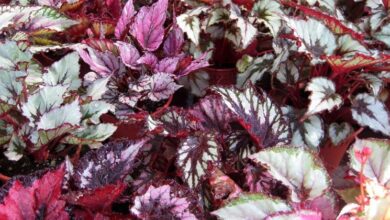Fogging plants from the air: how to water a plant from the air
A new owner of Tillandsia may ask, «Can you water a plant too much from the air? The frequency of spraying aerial plants depends on the type, location and size of the plant, as well as the environment. There are three main ways to keep your plant moist from the air. Once you know all three, you can decide which one is best for your plant. This article will tell you the methods and frequency with which you should spray aerial plants. You will then be on your way to a healthy and happy Tillandsia of any variety.
Can you over-water a plant from the air?
Tillandsias, or aerial plants, are one of the most unique forms of flora on our planet. It is often thought that aerial plants do not need water because they take advantage of the air and the occasional rainfall. In their native regions, this is almost true, but in the domestic environment, the air is too dry and sudden storms do not pass. Tillandsia need regular humidity but should not be overwatered. This can be a problem with air grown plants, but we will look at some methods to keep your plant moist.
Aerial plants are bromeliads and epiphytes. They tend to grow on stems, in cracks and crevices, and even on living plants, although they are not pests. They are more common in the tropics
.
forests, although some live in drier climates. Like all plants, air plants need water, light and food on a regular basis. They are more difficult than other houseplants because they are found in a soil-less environment, often mounted on something or inside a terrarium or glass bowl. The lack of means to retain moisture and nutrients poses a dilemma as to how to keep them healthy.
Watering plants with air is the most common method, but it does not actually wet the plant roots and can lead to fungal problems on the leaves if the plant is not well ventilated and the leaves dry out quickly. Fogging plants from the air is the best solution for increasing humidity in homes and really dry climates.
How do you water a plant from the air?
The watering method will depend on the installation style of your air handling unit. There are three main ways to water the Tillandsia. Misting is the first, rinsing the second and soaking the third. However, the last two will obviously not work on a mounted specimen unless the mounting is safe for soaking.
- How often should aerial plants be nebulized? In this case, spray the plants 3 to 7 times a week, depending on how dry the air is in your home and the time of year. Summer plants need more water, while in winter they can be maintained with less water.
- To wash the plants, remove them from their holder and place them on a sieve to rinse them thoroughly. All parts should be thoroughly soaked, including foliage and roots.
- Soaking is the most complete method, but again, it requires removing the plant from exposure. Soak the plant once or twice a week for 5 hours.
When it is most beneficial to spray plants from the air
Fogging plants in the air is not the most effective method of watering plants, but it is the most practical because it provides moisture to the plant’s environment. Otherwise, you will have to remove the wire holding the plant in its display and rinse or soak it to ensure that the moisture actually reaches the roots.
In winter, when water requirements are lower, misting is an appropriate way to give the plant the minimum amount of water. In addition, in summer, when temperatures are high, a good water bath in the form of a spray helps to cool plants suffering from heat stress.
However, if you want your aerial plant to be really healthy, misting will not be enough to provide moisture. Soak your plant at least twice a month if you mist mainly to provide moisture. This can provide the deep water supply the plant needs to maintain itself in its atmospheric environment.

